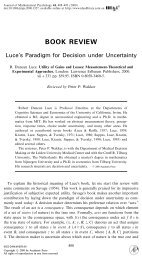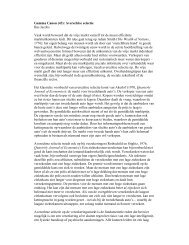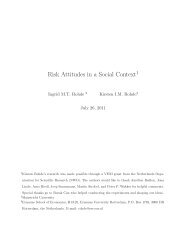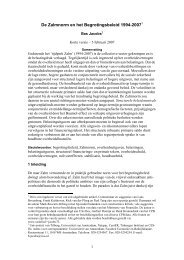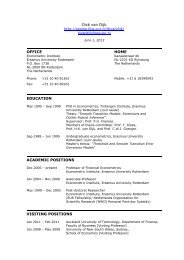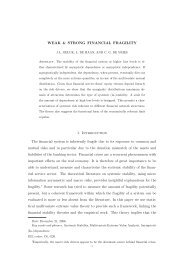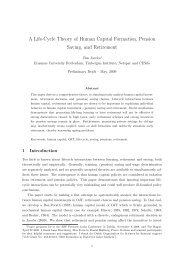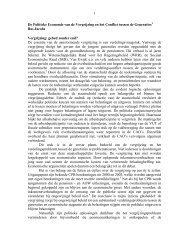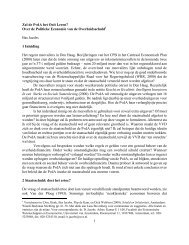Download PDF
Download PDF
Download PDF
Create successful ePaper yourself
Turn your PDF publications into a flip-book with our unique Google optimized e-Paper software.
other graduates between 1979 and 1997. After 1997 the relative position of S&E graduates<br />
clearly deteriorated and in 2002 the wage level of S&E graduates is 2 % below the average<br />
level of all other university graduates. At the HBO level the relative position of S&E graduates<br />
improved strongly in the first halve of the eighties. In 1985 S&E graduates earned on average<br />
10 % more than other HBO graduates. However, since 1985 this wage difference has declined<br />
steadily and in 2002 S&E graduates earned on average 5 % more than other HBO graduates.<br />
Hence, for both levels of higher education we find that the relative wage position of S&E<br />
graduates has been deteriorating since 1985.<br />
Table 6.2 Estimation of wage differentials per type of education 1979-2002, compared to all other<br />
60<br />
graduates<br />
Compared to all other graduates<br />
1979 1985 1996 1997 2002<br />
University S&E graduates 0.02 0.03 0.03** 0.02* − 0.02**<br />
(0.025) (0.044) (0.009) (0.009) (0.010)<br />
N=711 N=318 N=9,913 N=10,146 N=7,572<br />
HBO S&E graduates − 0.03** 0.10** 0.08** 0.06** 0.05**<br />
Compared to economic graduates<br />
(0.014) (0.017) (0.006) (0.006) (0.006)<br />
N=1,737 N=882 N=23,644 N=23,422 N=17,535<br />
University S&E graduates 0.02 0.03 − 0.09** − 0.09** − 0.12**<br />
(0.027) (0.047) (0.010) (0.010) (0.010)<br />
N=711 N=318 N=9,913 N=10,146 N=7,572<br />
HBO S&E graduates − 0.06** − 0.01 0.00 − 0.01 − 0.01*<br />
(0.017) (0.024) (0.007) (0.007) (0.007)<br />
N=1,737 N=882 N=23,644 N=23,422 N=17,535<br />
An asterisk */** indicates significance at the 10% / 5% level. Standard errors are given in brackets.<br />
Source: CBS, LSO 1979, 1985, 1996, 1997, 2002, own computations<br />
The bottom panel compares the wages of S&E graduates with the wages of economic graduates,<br />
which we consider a more appropriate control group. At the university level we again find that<br />
the wage position of S&E graduates deteriorates but the changes are more dramatic. In 1979<br />
and 1985 there is no significant difference in the hourly wages of S&E and economic graduates.<br />
In later years however, S&E graduates earn less per hour than their economic counterparts, up<br />
to 12% less in 2002. Hence, wages for economists have grown faster over the last 20 years than<br />
wages for scientists and engineers. For 1996 and later years we can distinguish between types of<br />
S&E education. For all types of S&E education, the relative wage position has deteriorated<br />
since 1996 (not shown in Table 6.2).<br />
For HBO S&E graduates the picture is somewhat different. Since 1985, the wages of S&E<br />
graduates and economic graduates have been about equal. The pattern differs between types of<br />
S&E studies. HBO engineering students earned about 2 % more than economic graduates.<br />
There was no significant difference in later years. Graduates in science earned about 9 % and




